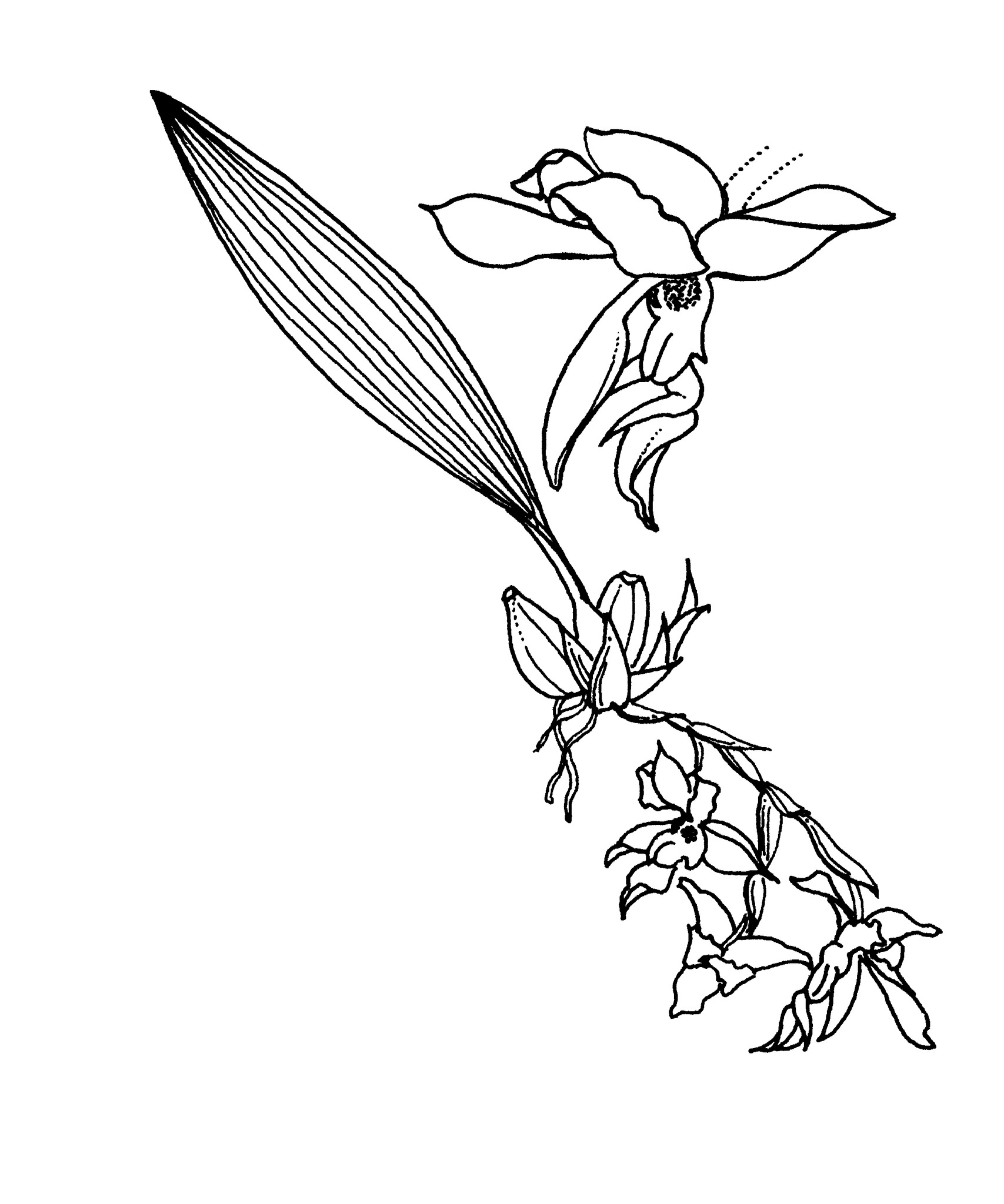
After the Right Honorable Philip Henry, 4th Earl of Stanhope (1791–1855), president of the London Medico-Botanical Society from 1829 to 1837.
Epiphytic, epilithic or terrestrial herbs, sympodial, with short rhizomes. Stems thickened into ovoid to pearshaped pseudobulbs, dense, grooved, green. Leaves apical, 1 or rarely 2, large, leathery, pleated, stalked. Inflorescences basal racemes, pendent, with large papery bracts. Flowers pendent, 1-few, short-lived, large, showy, fleshy, waxy, fragrant, variously coloured. Sepals dissimilar, dorsal free, laterals wider, free or fused at base, spreading or curved backwards. Petals smaller than sepals, free. Labellum complex, very fleshy, joined to base of column, usually divided into 3 parts; basal part (hypochile) pouched; middle part (mesochile) short (or absent) with a horn-like lobe on each side; apical part (epichile) simple, 3-toothed or 3- lobed, rarely entire labellum pouched. Column long, erect, curved, wingless to 2-winged. Pollinia 2, waxy.
Many of the thirty or so currently recognised species are very variable in colour and shape, which has, over the years, led to the application of over 120 published names. Due to this high degree of variability, the cultivated plants can prove difficult to identify with confidence.
About 30 species from Mexico to Brazil.
Large fleshy, strongly fragrant, waxy flowers in pendent racemes; very complex labellum often pouched and with several lobes.
Source: (2005). Orchidaceae. In: . Horticultural Flora of South-eastern Australia. Volume 5. Flowering plants. Monocotyledons. The identification of garden and cultivated plants. University of New South Wales Press.
